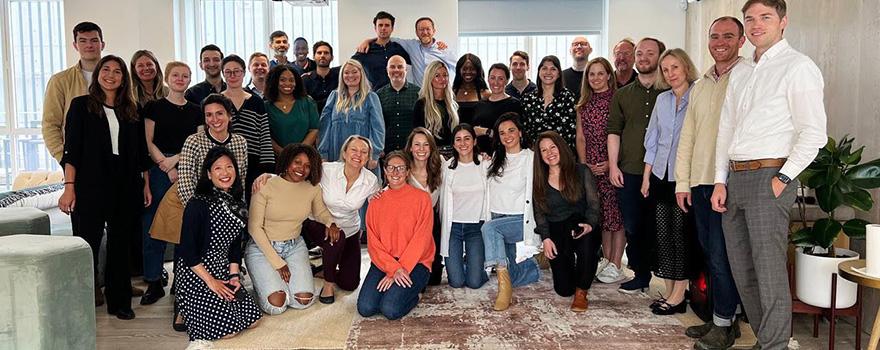
Table 3 summarises venture capital firms’ views of the most and least effective actions associated with Pathway 1: Diversity at the Top.
Table 3
Actions perceived as effective and less effective for Pathway 1
Effective actions
Venture capital firms should ensure senior decision makers, including Investment Committees, are made up of people from a diverse set of backgrounds
Venture capital firms should take steps to increase the diversity among those involved in the identification of potential propositions
Limited Partners should encourage venture capital firms to monitor and report progress in supporting diverse entrepreneurs
Less effective actions
Limited Partners and venture capital firms should design funds that are targeted specifically at diverse entrepreneurs
Venture capital firms should actively monitor social media to identify strong propositions from a diverse pool of entrepreneurs
Note: Outlined boxes indicate the most and least effective actions for this pathway. Source SQW
According to the venture capital firms aligned with Pathway 1: Diversity at the Top, the first step on the diversity journey is recognition that the lack of diversity in their portfolio (in terms of characteristics of founders) is a reflection of low diversity within venture capital firms themselves.
These firms observe that increasing internal diversity of venture capital firms, especially at the level of key decision makers, will have two effects. First, it can broaden the views ‘at the top’ and lead to better investment decisions, free from biases that may be typical for a single homogeneous group. Second, it can foster a culture of inclusion both for diverse founding teams, who will find it easier to communicate with people they can relate to, and for venture capital staff at all levels.
The latter effect is particularly important. The literature suggests that diverse teams can be characterised by a certain degree of conflict (due to a greater variety of views). When that conflict is managed well i.e. there are clear procedures in place on how consensus is reached and processes that ensure everyone gets the same level of attention irrespective of their background, diverse teams tend to outperform their non-diverse counterparts Read footnote text 1 . A ‘critical mass’ of minority groups may be required to ensure the psychological safety needed to challenge the status quo and prevent assimilation to the majority group. If diversity is reached in a ‘box ticking manner’, the benefits are unlikely to be realised.
-
Return to footnote location
1
For a more detailed discussion of the diversity vs effectiveness argument see for example Srikanth, K., Harvey, S. and Peterson, R., 2016. A dynamic perspective on diverse teams: Moving from the dual-process model to a dynamic coordination-based model of diverse team performance. Academy of Management Annals, 10(1), pp.453-493; and Board Diversity and Effectiveness in FTSE350 companies, LBSLI and SQW for FRC (2021).
I am a big believer that when [diversity at the investment committee level] is done correctly, it creates challenge, and gets to the best investment decisions […]. As with anything, people tend to seek out like-minded individuals. But you have to be careful here that there is no tokenism and people on investment committees truly have valuable experience. - Venture Capital Consultee
Furthermore, our analysis of Beauhurst data provided some evidence that could be interpreted as supporting the effectiveness of actions associated with Pathway 1: Diversity at the Top. Specifically, we found a positive statistically significant correlation, albeit weak, between gender diversity of founding teams of businesses that secured venture capital in the period between 2018 and 2022 and gender diversity of investors (proxied with the gender mix of key people listed on Beauhurst – up to 50 per firm) suggesting that more gender diverse founding teams tend to attract investment from more gender diverse investing teams. Although a positive effect exists, the magnitude of the effect is very small Read footnote text 2 . There were no statistically significant findings for ethnically diverse founders. The creation of funds designed specifically for investments into diverse founding teams was not supported by firms aligned with Pathway 1: Diversity at the Top. This view was based on the argument that the existence of targeted funds reinforces the false narrative that diverse founding teams require special conditions to perform well. Overreliance on targets was also suggested to have the potential to narrow the scope of an investment fund to the degree where the fund may not perform well due to the limited number of investment opportunities at a given point in time. This could later be misinterpreted as an indication of poor performance of companies set up by founders from underserved communities.
Instead of making investments through targeted funds (or using any other form of targets), in consultees’ view it would be more effective for Limited Partners (LPs) to play a key role in holding firms accountable for increasing diversity of investment.
Diversity at the Top is often considered an important governance factor in all kinds of organisations to mitigate the risk of groupthink. This research focuses on the impact Diversity at the Top can have on diversity of investment, which is related to but different to the case for good governance.
-
Return to footnote location
2
A linear model predicts only a 18 percentage points difference in gender representation between founding teams that secure investments from VC firms with only men listed as key contacts compared with those funded by firms with only women among key contacts (in our the sample, 462 businesses attracted finance only from investors with 100% men among key contacts and 3 companies secured funding from investors with only women listed as key contacts on Beauhurst).

Case Study: Pathway 1:
Diversity at the Top: Anthemis
Overview of the firm
Founded in 2010, Anthemis is one of the leading global fintech investors, it is both sector-focused and thesisdriven, and invests in companies that build, distribute, or are enabled by financial services. This is in early (including concept and pre-seed) venture and growth stages. Anthemis have invested in over 200 portfolio companies since their inception. Anthemis is a signatory of the UK Government’s Investing in Women Code.
Why is diversity at the top important?
Anthemis was founded with a core belief that a diverse team has the potential to outperform the market. As such, Anthemis have strived to create an inclusive firm which promotes the best ideas and backs diverse founders.
The significance of diversity within Anthemis extends beyond mere representation. By actively fostering diversity within the investment committee, the firm recognises that these individuals hold the key to pivotal decisions and are uniquely positioned to champion emerging talent within the team. Moreover, they possess the ability to drive meaningful change and shape diversity across the firm's portfolio. Their presence not only serves as a testament to Anthemis' commitment to inclusivity, but also empowers them to be allies, advocates, and catalysts for a more diverse and equitable venture capital ecosystem.
How has diversity at the top been achieved?
Intentionally building a diverse team has influenced Anthemis’ recruitment and onboarding processes. For example, the firm does not hire for cultural fit as studies have shown that these types of programmes can lead to unconscious bias and homogenous teams. The firm has been deliberate in hiring people who will be culturally additive.
Alongside this, the firm recognises the importance of inclusion and belonging practices. One of the firm’s values is for employees to be great collaborators but also respectful contrarians. By recruiting a team with diverse backgrounds and worldviews, the firm encourages challenging and thought-provoking conversations and tries to avoid groupthink. The firm’s diversity and inclusion programme has been co-created to reflect the different backgrounds of team members. Anthemis’ compensation and growth framework includes inclusive practices which individual and team performance is monitored against.
All investment team members have been trained in unconscious bias so that they are aware of typical biases that can inform selection decisions. Alongside this, Anthemis have partnered with LifeLabs Learning to build a bespoke training programme focused on inclusive selection which educates and challenges the investment team on unconscious biases that can affect each step of the pipeline.
Anthemis do not use quotas, because, in their view, this can end up being compliance driven or a tick box exercise. However, levels of diversity are formally reviewed every 12 months using self-reported data. Using self-reported data is important to the firm as not all diversity characteristics are observable and consent is important. All employees are invited to participate in the survey every 12 months.
What are the benefits to having diversity at the top?
Anthemis has found that diverse investors often go on to identify and authentically show up and connect with diverse communities, and those diverse communities and diverse founders often go on to attract diverse teams, and build more diverse and inclusive products that are more representative of society.
Anthemis have achieved diversity among its global team and in its portfolio:
- 70% of their investment team are women and all of their investment leads are women
- 48% of their portfolio founders either identify as women or ethnic minorities.
What are the key tips to achieving diversity at the top?
There is no one silver bullet. Diversity at senior levels cannot be achieved through a single solution; it demands a comprehensive approach and an unwavering commitment over time. It necessitates a thorough examination of power dynamics, ensuring that those in influential positions reflect diverse perspectives. It involves actively supporting and nurturing individuals throughout their careers within the firm, while fostering strong alliances and providing inspiring role models.
To truly embed inclusivity, the firm strongly advocates for inclusive practices to be ingrained in every aspect of decision-making and performance evaluation. This entails structuring investments in a manner that embraces diversity and recognising its vital role in longterm success. Additionally, the firm emphasises the importance of collaboration and knowledge-sharing across the industry. By fostering a culture of openness and encouraging the exchange of best practices, the entire ecosystem can advance together towards achieving greater diversity, equity and inclusivity.